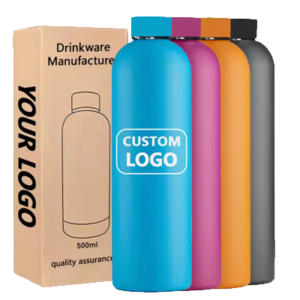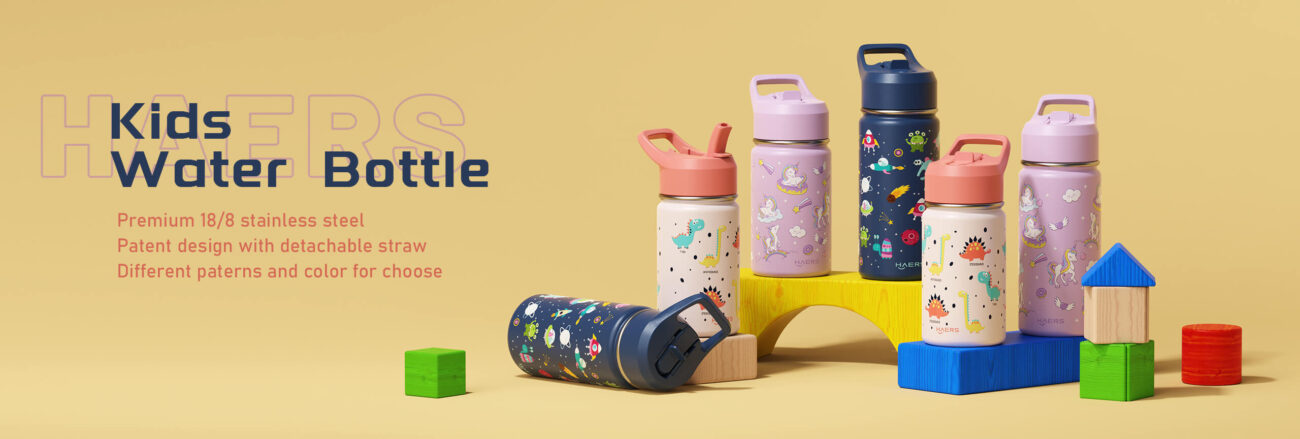What are the dangers of non-food grade water bottles?
Staying hydrated is a part of daily life, and for most of us, water bottles are essential for drinking water. Whether it’s carrying a bottle to school, work, or outdoor activities, the choice of water bottle can impact both our health and the environment. However, not all water bottles are created equal. If we don’t pay attention to their material and quality, they could pose serious risks. Specifically, non-food grade water bottles or bottles containing BPA (Bisphenol A) can cause significant problems.
Table of Contents
ToggleThe Dangers of Non-Food-Grade Water Bottles
Some water bottles made from low-quality materials may contain harmful substances like heavy metals, plasticizers, or toxins that leach into the water we drink. Here’s why this is a concern:
- PVC (Polyvinyl Chloride):
- Common in low-cost plastic products like bottles and packaging.
- Contains plasticizers like DEHP, which can disrupt hormones, harm fertility, and even affect child development.
- PS (Polystyrene):
- Found in items like foam cups and thermal liners.
- May release carcinogens such as benzene, which is linked to leukemia, or toluene, which can harm the nervous system.
- ABS (Acrylonitrile Butadiene Styrene):
- Often used in mugs and toys.
- Releases styrene and acrylonitrile, which may cause respiratory irritation and harm the nervous system over time.
- 201 Stainless Steel:
- A low-quality stainless steel that can rust over time. Rust particles may leach into drinking water, potentially harming the liver and blood health.
By avoiding water bottles made from these materials, we can protect ourselves from long-term exposure to toxic chemicals that might disrupt our health.
Why Choose BPA-Free Water Bottles?
BPA, a common chemical used in many plastic products, can seep into beverages, especially when exposed to heat. Here’s why it’s important to steer clear of BPA:
- Endocrine Disruption:
- BPA mimics hormones, disrupting the body’s endocrine system. This imbalance can affect reproduction, immunity, and even metabolism.
- Risks for Children and Pregnant Women:
- BPA exposure has been linked to developmental issues in children, including learning disabilities and hyperactivity. Pregnant women exposed to BPA may face risks of preterm labor or low birth weight.
- Increased Disease Risk:
- Long-term exposure to BPA is associated with elevated blood pressure, abnormal blood sugar levels, and a higher risk of cardiovascular disease and cancer.
To stay safe, opt for BPA-free bottles made of glass, high-quality stainless steel, or safe plastics explicitly marked as BPA-free.
How to Protect Your Health and the Environment
Here are a few practical tips to ensure you’re making safe choices with your water bottles:
- Choose Safe Materials:
- Look for water bottles made from food-grade materials like glass, stainless steel, or BPA-free plastics.
- Check for Labels:
- When buying a bottle, check for certifications like “BPA-free” or “food-grade material.”
- Avoid Heat and Sunlight:
- Even safe plastic bottles can degrade when exposed to heat. Avoid leaving bottles in the car or microwaving them.
- Replace Regularly:
- Over time, even the best bottles can show wear and tear. Replace them periodically to ensure they remain safe to use.
- Maintain and Clean:
- Regularly wash your bottles to avoid odors, bacteria buildup, and limescale.
Why This Matters Locally
In Haers, where sustainability and health are becoming key concerns, making better choices with water bottles is a simple yet powerful step. By choosing safe, reusable bottles, we not only safeguard our health but also help reduce plastic waste that pollutes local parks, streets, and waterways.
Let’s make an effort to switch to safer, eco-friendly options—and encourage our friends and families to do the same. Together, we can build a healthier and greener world.



